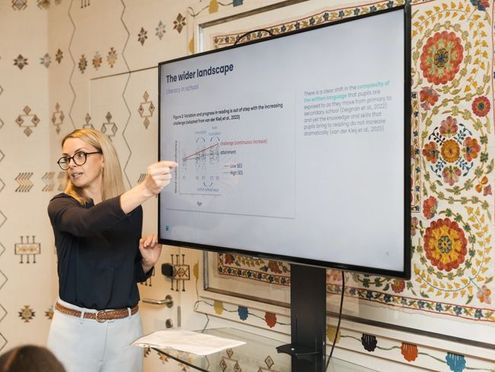If you are teaching English in a bilingual or multilingual classroom, how to teach vocabulary is probably one of your biggest conundrums. While it may not be your primary focus each lesson, you will no doubt be aware that every lesson, learners will be encountering new language incidentally. It’s worth getting learners into good learning habits.
With a few relatively simple steps, you can create an environment that ensures retention of language is long term, understanding is nuanced and students are encouraged to take responsibility for developing their own vocabulary.
Translanguaging and semantic mapping
Perhaps the key thing to note is the value of translanguaging in learning new vocabulary in a target language. Professor Ofelia García of the Graduate Center of the City University of New York is a key proponent of translanguaging and she defines it as follows:
“… the deployment of a speaker’s full linguistic repertoire without regard for watchful adherence to the socially and politically defined boundaries of named (and usually national and state) languages.” - Professor Ofelia García, Graduate Center of the City University of New York
In a classroom, this means that a learner's first language is used as means to learn the second (or third… or fourth.) One effective way of using translanguaging when teaching new vocab is to ask learners to draw ‘semantic maps.’
As Stahl (2005) wrote, “the knowledge of a word not only implies a definition, but also implies how that word fits into the world.” Semantic mapping will allow your students to make links between words and see how new language links up with language they already know. This is a great way of encouraging translanguaging.
Which languages should be used for translanguaging?
There is no reason why the semantic map should be in one language or the other. By enabling learners to use their ‘full linguistic repertoire’, you will allow them to see the links between the language they feel secure using, and the new language they are learning.
This is a way of developing the mental schema around that word; it enables students to see all of the other language that is related to the new, target word and allows them to link that new word to language they already know.
Ideas for semantic mapping
If you keep a physical copy of the semantic maps and add to them regularly, it can also be a rewarding, visual reminder for your learners of just how much their vocabularies have grown.
Tip: If you’re studying a text in your lesson, try developing semantic maps for a key theme. For example, if one of the themes is ‘change,’ each time you learn a new word that is related to change, you can add it to the map. Encourage learners to add words in their own language around the map as well.
As an extension activity, blindfold two students and ask them to choose one word each from the map. Ask the class then to explain the difference between the two words. In this way, you can assess how nuanced the class’s understanding of each vocabulary item is.




